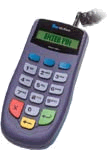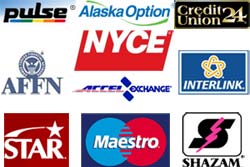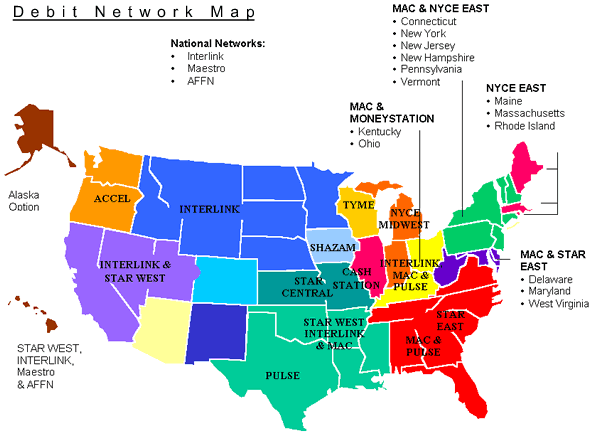

Help Articles & FAQ
Understanding PIN Pads & PIN-based Debit Benefits(?)
(Feel free to comment and post your own questions. Free help & support.)

PIN vs Signature Debit
This added step of security is worth it for Merchants. Lower risk always translates to lower fees. Always encourage employees to run bank cards as Debit, not Credit! But signature debit may be better than PIN-based...

Should I get a PIN pad?
Debit cards are definitely better, but what about PIN-based debit?
Obviously, you must be a Card Present merchant who is face-to-face with customers to swipe credit cards, otherwise PIN debit is impossible. (although some companies are trying to make PIN debit possible for customers at home using their computers).
There are two determinations to make in deciding whether or not to get a PIN pad.
- Your business industry classification (SIC/MCC)
- Your Average Ticket
Why?
Because Visa, MasterCard, American Express and Discover (all Card Associations) assess lower fees to certain industries who sell lower average tickets.
Supermarkets, for example, get the lowest rates on low average tickets. Their reason for this is that almost no one disputes grocery store purchases, especially under $15.


PIN Pads are best for supermarkets or higher average ticket sales
Because PIN-based Debit transactions have a tremendously reduced rate (Example: 0.75% + 50¢ per transaction) OR even a fixed, flat fee (90¢ per Pin-Based Debit transaction), the size of your average ticket is the most important consideration to determine whether to implement a PinPad.
Advantages of PIN based Debit
- 15 times the security over signature debit
- PIN is Online; signature debit is Offline.
- PIN debit protects against chargebacks
- PIN based debit ends NSF fees
- Contactless payment requires PIN
Real World Examples
If you’re a candy store and your average ticket is $4.00, obviously you do NOT want to be charged $1.00, for example for Pin Debit. That’s 25.0% !
However, if you own a nice restaurant and your customer charges $500 on her PIN Debit card, you only pay $1.00 ! That’s only 0.2 %!
What if you own a car lot (where people use debit cards for down payments) and your customer puts $5000 down from his checking account using his PIN Debit card, you still only pay $1.00. That’s 0.02 %, potentially saving yourself a hundred dollars!
How It Works
The reason for the reduced rate is risk: cardholders prove their identity by being able to enter their secret PIN (Personal Identification Number).
PIN-based Debit Networks are both faster and more reliable because authorizations happen in real time (online, rather than offline like signature debit) and instantly transfer money into the Merchant’s bank within 48 hours. With credit cards, however, Issuing Banks have to wait until the cardholder pays their bill.
About the Networks
Examples of Credit Networks include T-Sys (Total Systems formerly called Vital and VisaNet, is the largest single payment platform in the world), CardNet, Omaha, NDC, Nova, Global & Concord.

Examples of PIN-based Debit Networks include Pulse, STAR, NYCE, Maestro, Interlink, AFFN, Shazam, Accel, MPact, Instant Teller, Tyme, Alaska Option, Credit Union 24 and Jeanie.
Debit networks have been growing increasingly greedy by eliminating previous capped transaction fees where Merchants were never charged more than a limit (example: $1.00 per transaction).  Now most networks are charging transaction fees as high as 30¢, but also insisting on a percentage of the transaction as high as 0.75%, which varies depending on which Debit Network used for the cardholder’s bank or credit union.
Now most networks are charging transaction fees as high as 30¢, but also insisting on a percentage of the transaction as high as 0.75%, which varies depending on which Debit Network used for the cardholder’s bank or credit union.
NOTE: Many Industry Types get special rates on Debit Cards (non-PIN) (because of additional reduced statistical risk) including Public Utilities, Bill Payment companies, Educational Institutions, Insurance, Real Estate, Supermarkets, Gas Stations, Lodging, Auto Rentals, Charities and Social Services.



 Call our Merchant Relations consultants for free help, quotes or analysis of your current merchant statement or for new service at
Call our Merchant Relations consultants for free help, quotes or analysis of your current merchant statement or for new service at 







